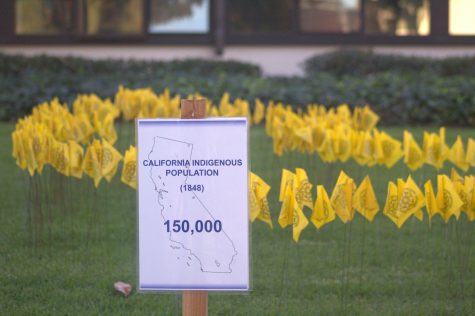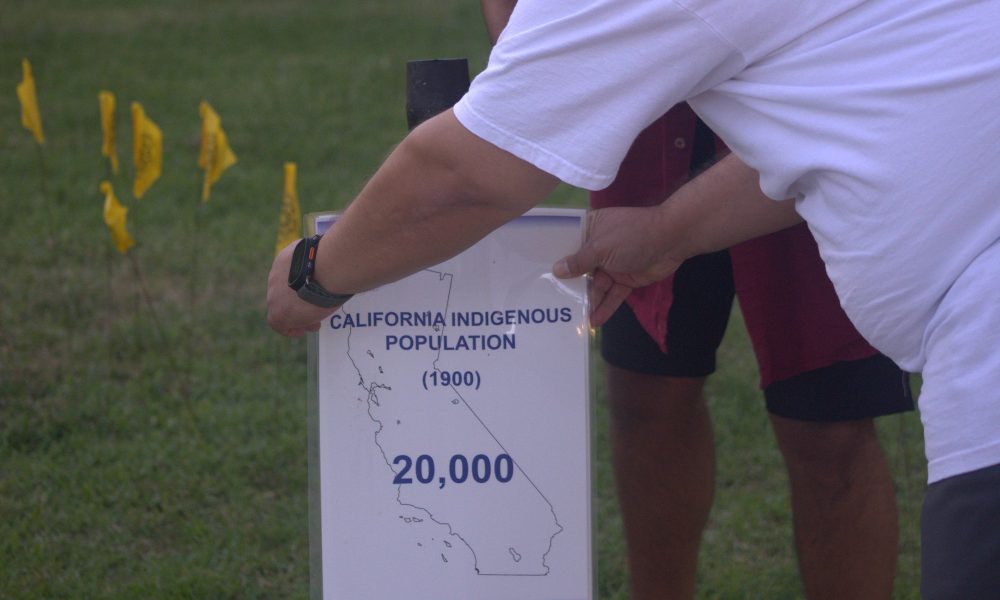Faculty and students with the AIS department created a flag installation Monday afternoon to mark the first week of Native American Heritage Month and raise awareness for the murders of indigenous people during the gold-rush era.
“Through our resilience, survivance and thrivance, we honor the sacrifices of our ancestors and pave the way for a future where California Indian Peoples thrive,” said American Indian Studies (AIS) professor Kelly Stewart.

The installation includes yellow flags with the words,“count what you value’ in the Tongva language. The flags are meant to represent the diminishing Indigenous population in California due to mass murders committed between 1848 and 1855. According to the installation, over 100,000 Indigenous people were killed during this time.
“There’s a lot of talk about the gold rush when you’re in fourth-grade social studies class, but there’s barely any mention of Native Americans at all,” said Mia Nuñez, a first-year pre-kinesiology major and member of the Coast Miwok tribe based in Northern California. “And they definitely won’t tell you about the murders that happened or how many of them died off.”
The installation was intentionally placed in the same area where the Prospector Pete statue formerly stood, a reference to the school’s former gold-rush pioneer mascot.
In past years when the statue was still mounted, AIS program director Professor Craig Stone covered the statue’s plaque every Indigenous People’s Day with a sign that said “Blind to history” with the dates of the gold rush.
“All these folks would show up at a certain time and we’d sing those songs and then they would round dance. And we had tables outside, it was called Genocide Awareness Week,” Stone said.

The songs sung were in the Chumash language with the lyrics, “Open your eyes, blind to history way. Open your heart, open your mind,” according to Stone.
Andrey Liu, a first-year aerospace engineering major came out to show his support and participate in the installation of the flags.
“I think it’s important to recognize these events. We obviously don’t want to repeat history and need to recognize the struggles of those from the past and honor those who prepared the way for future generations,” Liu said.
According to Nuñez, there hasn’t been any public acknowledgment of the California Indian genocide except for an apology issued by Gov. Newsom in 2019.
“I really just want to open up that topic and allow people to question those things and to bring it up now because we’ve been suppressed for a long time and been told, ‘Oh, we should just leave it in the past,’” Nuñez said. “We don’t want to leave it in the past. We want people to bring it up because it’s a concern and it still affects us today.”

The flags are set to remain up near the central quad behind the Faculty Office 2 building until the end of November.
“The California Indian Genocide is a painful chapter in our history. While it has left a lasting intergenerational wound, it does not define us. We are the descendants of survivors,” Stewart said.




